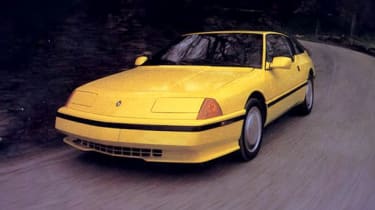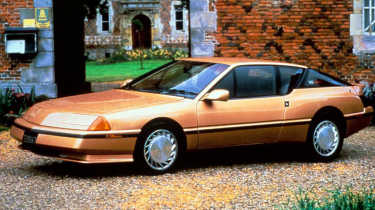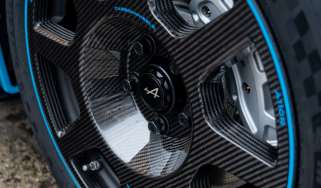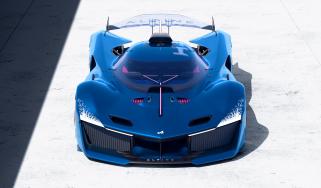Alpine GTA USA – dead on arrival
The tale of how a revised ’80s Alpine nearly became a halo car for Renault in America
In 1979 AMC made a deal with Renault to sell the French company’s cars through its vast US dealer network. From there things got serious and by late 1980 Renault was taking a 46 per cent stake in the struggling American company and drawing up grand plans for a US invasion, led by locally assembled versions of the R9 and R11 and an Americanised version of the R18. But to lure Americans to their local AMC showrooms Renault really needed a sexy, low‑slung flagship.
Happily, the company’s advanced research division, BEREX, was working on just such a thing: a striking successor to the Alpine A310, to be called the Grand Tourisme Alpine or GTA. Less happily, by the time Renault realised the GTA could be useful across the Atlantic the project was already well advanced and, given its shoestring budget, no effort had been made to engineer it for US regulations. But Renault’s appetite was whetted by projections that said 2500 Americans a year would buy one, thereby doubling GTA production numbers, so once the Euro Alpine had entered production in late ’84, Renault HQ gave BEREX an extra 180 million francs to create a GTA that would meet US rules and requirements.
> Saab PhoeniX – dead on arrival
The changes needed were many, starting with a stronger front-end structure, bigger and tougher bumpers, and side-impact beams in the doors. The glassed-in headlights breached strict US standards so they were replaced by pop-up lamps, sitting above an enlarged front intake for better cooling. Also on the outside there were Federally mandated side marker lights and a central stop lamp, while on the inside Americans would get standard air con, leather seats and cruise control.
All told, the US market Alpine was 136mm longer, 200 kilos heavier and ten per cent weaker, its emissions-control kit knocking the 200 horsepower turbocharged V6 of Euro cars down to 180bhp. By late 1986 the Federalised GTA was ready and pre-production cars were loaned to a generally enthusiastic US media, Motor Trend even proclaiming it a ‘European Corvette fighter’.
Unfortunately, in November 1986 Renault boss Georges Besse was assassinated by left-wing terrorists, and his successor, Raymond Lévy, had no patience for the company’s expensive American adventure when La Regie’s ship urgently needed stabilising at home. In March ’87 AMC Jeep was sold to Chrysler and the American-spec GTA was culled just as series production was about to begin. Of the 21 cars built before the blade fell, 12 were sold to the public and the rest used in the development of the Alpine A610, a revised GTA incorporating many of the engineering changes created for the American model. This, however, wasn’t the only way in which a part of the Federal GTA lived on.
Around the time the American Alpine was cancelled, Lotus was signing off Peter Stevens’ design for the M100 Elan, which was intended to use Isuzu Piazza rear lights behind perspex covers. Only after the design had been approved was it found that these didn’t emit enough light to meet homologation rules, triggering an urgent search for replacements that ended when Stevens spotted a GTA in an episode of BBC yacht schlock drama Howards’ Way and reckoned its tail lights were the right size and shape for his Elan.
A quick trip to a local Renault dealer confirmed his suspicion and the French were happy to sell Lotus the parts, including the redundant Federalised version of the GTA rear light (with red turn signals rather than orange) which was used on Elans exported to the USA. As such, while the US-spec GTA died with Renault’s American ambitions, a piece of it lived on with every M100 Elan sold in the United States.
This story was first featured in evo issue 306.








